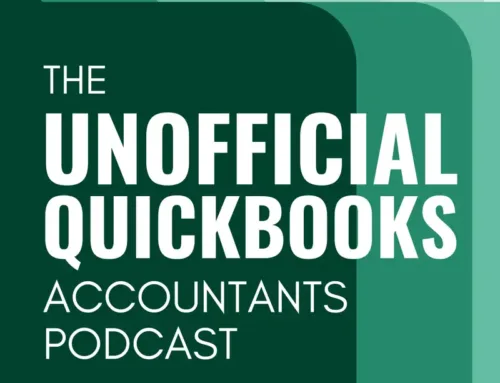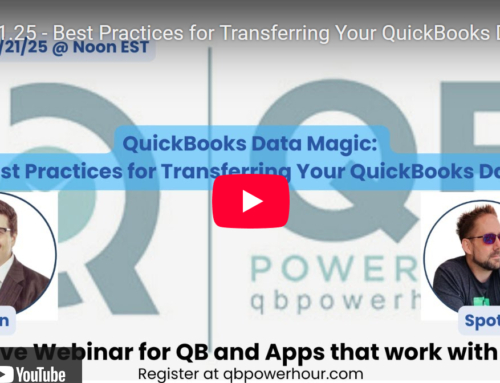How to Export QuickBooks Online to QuickBooks Desktop
Have you ever tried to export your QuickBooks Online information back to QuickBooks Desktop but ran into problems? During this article and video we are going to walk you through the whole process.
In this article, we will explore the process of exporting QuickBooks Online data to QuickBooks Desktop in 2023. While this process may vary slightly depending on your specific environment, we will provide a comprehensive step-by-step guide to help you navigate through the migration successfully. It’s important to note that before initiating the export, you should ensure that your data is clean and reconciled for a smooth transition.
Step 1: Access the Export Data Option:
To begin the process, log in to your QuickBooks Online company file and navigate to any screen within the file. Look for the gear icon located at the top right corner of the screen and click on it. From the drop-down menu, select “Export Data.”
Step 2: Select the Export Option:
Upon selecting “/exportdata,” a prompt will appear asking about your intended action. Locate the option that reads “/exportqbodatatoqbdt” and click on it. Ensure that all necessary settings are configured according to your requirements. Press Enter to proceed.
Step 3: Install the Migration Tool:
At this stage, QuickBooks will prompt you to install a migration tool, which acts as an adapter to facilitate the data transfer between QuickBooks Online and QuickBooks Desktop. Download the migration tool and follow the installation instructions. Make sure you have QuickBooks Desktop installed on your computer before proceeding with the installation.
Step 4: Choose Data to Export:
Once the migration tool is installed successfully, click “Continue” to proceed. You will be presented with options to select the data you wish to export. You can choose between exporting all financial data (including transactional information) or only exporting data without transactions (list balance only). For most scenarios, selecting “All financial data” is recommended. Click “Continue” to proceed.
Step 5: Select Backup Option:
If you have previously created a backup of your QuickBooks Online data, the system may detect it and ask if you want to use the existing backup file. In this case, choose the option to start over if you want to create a new file for migration. Confirm your selection.
Step 6: Provide Email Address for Transfer:
QuickBooks will ask for your email address and other necessary details to initiate the export process. Enter the required information and click “Continue” to proceed.
Step 7: Await the Export Process:
Once you have completed the previous steps, you will enter a waiting period. The duration of this period depends on the size of your company file. QuickBooks will generate a QuickBooks Desktop version of your file, which you can download once the process is complete.
Step 8: Prepare Your Data for Migration:
Before initiating the export, it is essential to ensure that your data is clean and reconciled. Reconcile all accounts, generate accrual-based reports, and ensure that there are no pending transactions in the banking area. Clean up your customer and vendor lists, as well as your chart of accounts, for a smoother transition. Keep in mind that certain accounting aspects, such as longer names, locations, classes, and tags, may have limitations during the migration process.
Conclusion:
Migrating from QuickBooks Online to QuickBooks Desktop in 2023 requires following a specific set of steps to ensure a successful transition. By accessing the export data option, installing the migration tool, selecting the appropriate data, and preparing your company file for migration, you can streamline the process. It is crucial to have your data cleaned up and reconciled before initiating the export to minimize potential issues during the transfer. By following this step-by-step guide, you can confidently export your QuickBooks Online data to QuickBooks Desktop, allowing you to continue managing your business
Why would you want to do this?
So you may be wondering to yourself, why would I want to export QuickBooks Online to QuickBooks Desktop? There are a couple different reasons why I always make sure that I know this process is still working correctly.
Let’s talk about the limitations of this downgrade
There are some major differences between the two programs that you should really review before exporting QuickBooks Online to QuickBooks Desktop. The following link will cover what to watch will and will not migrate over during the conversion process.
What features and data move when you export QuickBooks Online to QuickBooks Desktop
Below are quick jump points in the video, just in case you are in a hurry!
Here is the necessary change to the URL to access this function.
Sample URL: Once in the company file, Change the last past of your URL after the “/app” with “/exportqbodatatoqbdt”




